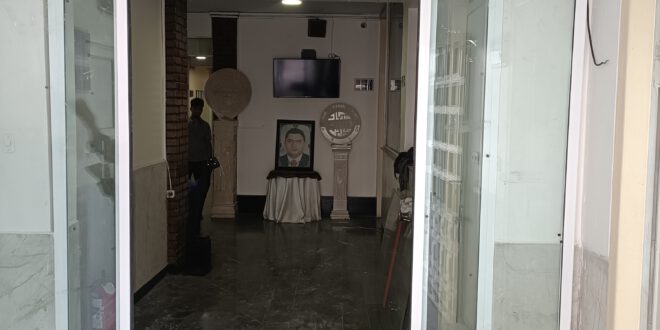Enhancing Security and Accessibility: The Role of Automatic Glass Doors in Banking
In an era characterized by rapid technological advancements and evolving customer expectations, the banking sector stands at the forefront of innovation. One particularly noteworthy development is the implementation of automatic glass doors, a feature that has gained prominence across various financial institutions. This essay delves into the multifaceted role of automatic glass doors in banking, emphasizing their contributions to security and accessibility. By exploring the intersection of these two critical aspects, we can better appreciate the value that automatic glass doors offer in creating a conducive banking environment.
Security Enhancements through Automatic Glass Doors
In the realm of banking, security has always been paramount. Financial institutions are in constant pursuit of measures to safeguard their assets, data, and clientele. Automatic glass doors represent a significant advancement in this endeavor. Crafted from robust materials, these doors not only provide a visual barrier but are also equipped with advanced locking mechanisms that deter unauthorized access. As a result, they serve as a formidable first line of defense against potential intruders.
Moreover, automatic glass doors can be integrated with modern surveillance systems, augmenting security protocols. By allowing for seamless access control, banks can monitor foot traffic more efficiently and recognize potential threats in real-time. These doors typically include motion sensors and RFID technology, which facilitate controlled entry for authorized personnel while simultaneously alerting security systems of any irregularities. The integration of such technologies underscores the essential role that automatic glass doors play in a bank’s comprehensive security strategy.
However, the security features of automatic glass doors extend beyond mere physical barriers. Their transparent design allows for heightened visibility, which contributes to strengthening the overall monitoring of the premises. From a security perspective, the unobstructed view that these glass doors provide allows security personnel and bank employees to keep close watch on patrons, thereby fostering a heightened sense of safety both for the staff and clientele. This visibility not only deters potential criminal activity but also enhances the quick reporting of suspicious behavior, creating an overall safer environment within the banking facility.
Accessibility Improvements through Automatic Glass Doors
Alongside security, accessibility is another central pillar of modern banking practices. The emphasis on inclusivity has prompted financial institutions to adopt more user-friendly designs that cater to a diverse clientele, including the elderly, the physically challenged, and parents with strollers. Automatic glass doors are a prime example of how banks can create a more welcoming and accessible environment.
One of the most significant advantages of automatic glass doors is their ease of operation. They eliminate the need for manual door handling, making it effortless for individuals with mobility challenges to enter and exit the premises. By simply approaching the door, patrons are granted seamless access without the need to exert physical effort. This consideration for users with disabilities not only aligns with regulatory standards, such as the Americans with Disabilities Act, but also demonstrates a commitment to customer-centric service, which is essential in fostering positive community relations.
The design of automatic glass doors also enhances the overall aesthetic appeal of a banking establishment, creating an inviting atmosphere that promotes a sense of belonging. The transparency of glass doors provides an open and airy feeling that counters the often intimidating aura associated with financial institutions. This not only attracts new customers but also encourages existing clients to engage more readily with the services provided.
Furthermore, during peak business hours, automatic glass doors help to streamline customer flow. By reducing bottlenecks at entry points, they contribute to a more organized and efficient banking experience. Patrons can enter and exit with minimal delay, thus enhancing the overall service quality of the bank. In the age of instantaneous gratification, such enhancements to accessibility are not merely convenient; they are a necessity for remaining competitive in a saturated marketplace.
Balancing Security and Accessibility
While security and accessibility may initially appear to stand in opposition to one another, the implementation of automatic glass doors exemplifies how these two priorities can coalesce harmoniously within a banking context. The sophisticated technology embedded in these doors effectively addresses the security concerns of financial institutions while simultaneously enhancing the accessibility needs of their clientele. This dual focus fosters an environment where safety and customer satisfaction are not mutually exclusive but rather mutually reinforcing.
Ultimately, the strategic incorporation of automatic glass doors within banking establishments represents a forward-thinking approach to facility design. The investment in these technologically advanced doors not only safeguards the institution’s assets but also reinforces its commitment to accessibility, allowing it to serve a broader audience. As banks continue to adapt to the changing landscape of customer needs and security threats, the role of automatic glass doors will undoubtedly remain pivotal.
Conclusion
In conclusion, automatic glass doors play a crucial role in enhancing both security and accessibility within the banking sector. Their ability to create a secure environment through robust design and advanced technology, while simultaneously offering seamless access for all patrons, positions them as an invaluable asset for financial institutions. As banks strive to achieve operational excellence and customer satisfaction, the integration of automatic glass doors will continue to serve as a vital element in developing an inclusive and secure banking experience. In a world where the safety and convenience of customers are paramount, these doors stand as a testament to the innovative spirit of the banking industry, paving the way for a future that prioritizes both security and accessibility.
 Elico Glass Industry Balcony & partition Glass
Elico Glass Industry Balcony & partition Glass






Every bank should definitely consider installing automatic glass doors for several reasons! 🚪✨1. Accessibility: Automatic doors make it easier for everyone, including those with mobility challenges, to enter and exit the bank smoothly. ♿️👏2. Convenience: Customers can quickly walk in or out without having to pull or push, especially when their hands are full. 👜👍3. Modern Aesthetics: Glass doors give a sleek, modern look that can make the bank feel more inviting and upscale. 🏦💎4. Energy Efficiency: Automatic doors can help regulate indoor temperature, reducing energy costs and creating a comfortable environment. 🌱💡5. Enhanced Safety: They often come with safety sensors, providing an added layer of protection for customers and staff. 🔒🛡️6. Improved Traffic Flow: Automatic doors can help manage foot traffic better, reducing congestion during busy hours. 🚶♀️🚶♂️Investing in automatic glass doors is a smart move for enhancing customer experience and ensuring a welcoming atmosphere! 💖👍